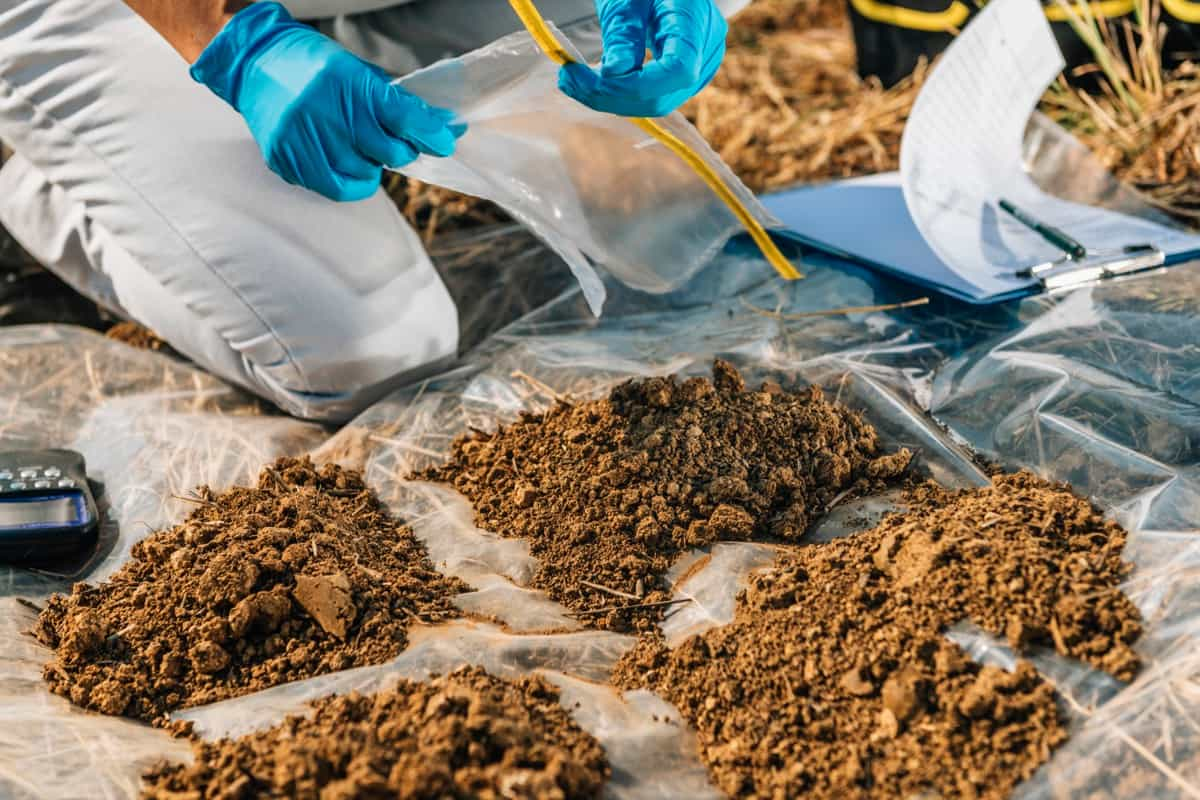Soil is a crucial component of the earth’s crust since it serves as a home for numerous living species and a substrate for plant development. The size, proportion, arrangement, and mineral makeup of soil particles impact their physical qualities, such as water-holding capacity, permeability, aeration, plasticity, and nutrient delivery. A healthy environment requires good soil.

Best soil management practices
What are soil management practices?
Soil management practices are the techniques and tactics used in agricultural operations to maintain and improve the health and fertility of the soil. These strategies attempt to conserve and improve the soil while boosting agricultural yields, improving water and nutrient efficiency, minimizing erosion, and improving soil structure.
Crop rotation, cover cropping, conservation tillage, soil testing, and nutrient management, as well as the use of suitable pesticides and organic matter, are examples of such operations. Effective soil management strategies are crucial for sustainable agriculture and food production.
Adopting best soil management practices
- Soil sampling: The method of gathering a representative sample of soil from a field to assess its chemical and physical qualities is known as soil sampling. This data is then used to identify the best soil management strategies to apply, such as the kind and amount of fertilizer needed, the pH level, and the presence of hazardous substances.
- Manure-based fertilizer: Manure-based fertilizers are made from animal waste and are rich in nitrogen, phosphorus, and potassium, essential plant nutrients. These fertilizers can improve soil fertility, structure, and water-holding capacity, leading to increased crop yields and reduced dependence on chemical fertilizers.
- Cover crops: Cover crops are grown between primary crops to improve soil health, reduce erosion, and add organic matter to the soil. They also provide ground cover and help to reduce the impact of weeds, pests, and diseases. Cover crops are often leguminous, meaning they can fix nitrogen from the air and add it to the soil.
In case you missed it: Potassium Humate Fertilizer Uses in Agriculture: Benefits for Plants, Dosage Per Acre, and Application Methods

- Liquid organic fertilizers: Liquid organic fertilizers are made from organic matter, such as compost or seaweed extract, and are a convenient alternative to solid fertilizers. They are easy to apply and can quickly provide plants with essential nutrients.
- No-till farming methods: No-till farming involves minimal soil disturbance, helping to conserve soil structure and reduce erosion. This method reduces the need for tillage equipment. It can improve soil health, increase water retention, increase organic matter levels, and improve crop yields.
- Effective weed control is essential for maintaining soil health and improving crop yields. It can be achieved through cultural methods, such as crop rotation or chemical herbicides. Good weed control practices can reduce competition for water and nutrients and help prevent the spreading of harmful weeds.
- Crop rotation: Crop rotation is the technique of planting several crops on the same land in a certain order throughout time. It reduces the effect of soil-borne illnesses and pests while improving soil fertility by increasing organic matter and decreasing soil compaction.
- Biological pest control: Biological pest control involves using natural predators, parasites, and pathogens to control pests in crops. This method is more environmentally friendly than chemical pest control. It can help reduce harmful pests’ impact on crops and the wider ecosystem.
The benefits of soil management
The advantages of soil management are numerous, and they may significantly influence agricultural enterprises’ performance. Among the many advantages are:
Improved productivity: Effective soil management measures can result in higher agricultural yields, which leads to increased productivity and profitability for farmers. Farmers may ensure that crops receive the nutrients they require to grow healthy and strong by analyzing soil and applying the proper type and fertilizer.
Cost savings: Good soil management methods help farmers save money by decreasing the demand for expensive inputs like water, fertilizer, and pesticides. Farmers may save costs and enhance their bottom line by protecting soil and water resources.
Improved soil fertility: Organic fertilizers and cover crops, for example, can help to improve soil fertility and structure, resulting in higher crop yields and better soil health. Farmers may increase soil fertility and create a more friendly environment for crop growth by minimizing soil compaction and raising organic matter levels.
In case you missed it: How to Make Compost from Grass Clippings: DIY, Recipe, Best Natural Fertilizer for Your Plants

Water conservation: By lowering the demand for irrigation and mitigating the effects of drought, effective soil management measures can assist in preserving water. Farmers may preserve water resources and increase the sustainability of their operations by decreasing soil erosion and enhancing water-holding capacity.
Increased crop yields: Farmers may increase crop yields and profitability by using the proper type and amount of fertilizer, preventing soil erosion, and enhancing soil structure and fertility. Farmers may guarantee their crops get the necessary resources by adopting optimal management methods.
Principles of soil management
Soil management refers to various techniques and practices to improve and sustain soil fertility and productivity. Cover crops, crop rotation, tillage, conservation tillage, and the application of organic matter are examples of these strategies.
Cover crops are an important soil management tool. They protect the soil from erosion, prevent compaction and surface crusting, and enrich the soil with organic matter. Crop rotation is another vital soil management tool. Crop rotation promotes soil fertility, reduces pest and disease pressure, and improves water usage.
Tillage is a soil management activity that aids in the reduction of compaction and the improvement of soil structure. It entails mixing the soil and preparing it for planting using mechanical means. Conservation tillage is a soil management method that employs reduced techniques such as no-till or low tillage. It aids in the reduction of soil erosion and the conservation of soil moisture.
Soil management also includes the use of organic materials. It improves soil structure and fertility while also supplying nutrients to plants. Composting and using cover crops can help assimilate organic matter into the soil.
Soil degradation: Soil degradation is a decrease in land productivity caused primarily by human activity. According to the National Bureau of Soil Survey and Land Use Planning, different soil degradation concerns impact 57% of the entire geographical area (328 million hectares), with water erosion being the primary source of soil loss in 132 million ha.
Conclusion
Soil management is essential for long-term agriculture and increased crop production. Soil sampling, organic fertilizer use, cover crops, crop rotation, weed control, and biological pest control are all good soil management strategies. Implementing these methods contributes to improved soil fertility, water conservation, cost reduction, and, ultimately, better and more productive land.
- Feed Your Flock for Less: Top 10 Tips to Save on Chicken Feed
- Ultimate Guide to Ossabaw Island Hog: Breeding, Raising, Diet, and Care
- Hatching Answers: The Top 10 Reasons Your Chickens Aren’t Laying Eggs
- Eggs and Economics: Breaking Down the Cost of Raising Backyard Chickens
- Defend Your Greens: Proven Methods to Keep Iguanas Out of Your Garden
- Ultimate Guide to Cinnamon Queen Chicken: A Comprehensive Guide for Beginners
- Ultimate Guide to California Tan Chicken: Breeding, Raising, Diet, Egg-Production and Care
- Ultimate Guide to Marsh Daisy Chicken: Breeding, Raising, Diet, and Care
- 10 Types of Chicken Farming Businesses You Can Start for Profits